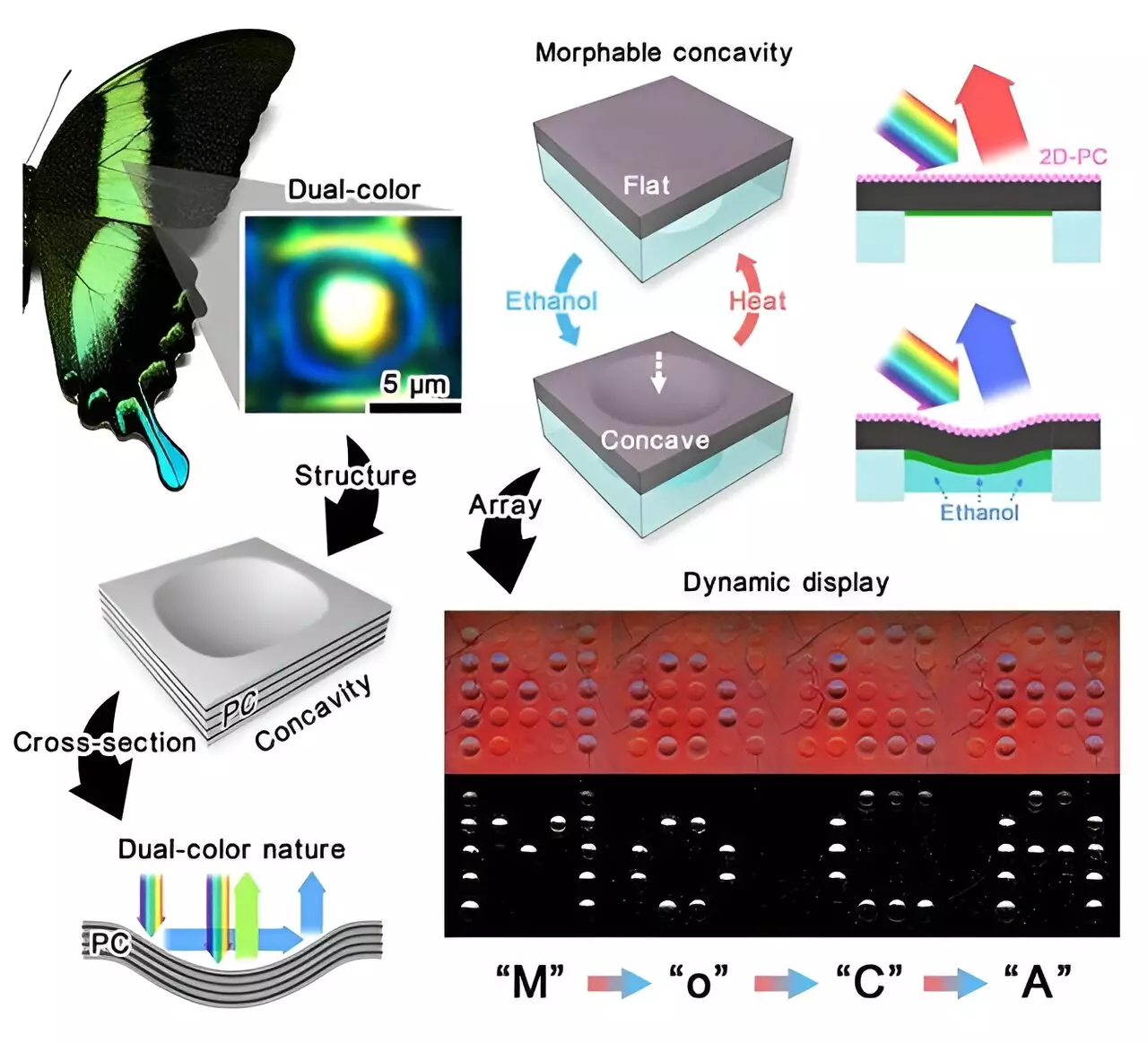Researchers at the University of Hong Kong (HKU) have recently developed a ground-breaking pixelated, soft, color-changing system known as the Morphable Concavity Array (MoCA). This innovative technology has the ability to manipulate light, allowing for a wide range of applications in various industries. The study, co-directed by Professor Anderson Ho Cheung Shum and Professor Mingzhu Li, was led by Dr. Yi Pan and published in Advanced Science under the title “Pixelating Responsive Structural Color via a Bioinspired Morphable Concavity Array (MoCA) Composed of 2D Photonic Crystal Elastomer Actuators.”
MoCA is a thin and flexible rubber-like structure, with a thickness equivalent to three human hairs. It consists of two layers: a top layer known as a photonic crystal elastomer actuator (PC-EA) film and a bottom layer called a hole array. The PC-EA film is further composed of two layers: an elastomer layer (GPDMS) on the top and a hydrogel layer (pNIPAM) below. When ethanol is applied to the pNIPAM layer, it swells, causing the elastomer GPDMS layer to be pulled downward into the hole in the array. This results in the formation of a dish-like concave shape called a morphable concavity (MoC), which acts as a pixel. The creation of the MoC blocks the red light and changes the visible color of the pixel from red to blue.
Inspiration from Butterfly Wings
The inspiration behind MoCA comes from the dual-color micro-concavities found on butterfly wings. These micro-concavities are tiny pits that block specific wavelengths of light, resulting in vibrant and iridescent colors. MoCA replicates the structure of butterfly wing photonic crystals and represents the first-ever pixelated color-changing system that utilizes flat and concave structures to produce different colors. The ability of MoCA to mimic the natural beauty found in butterfly wings makes it an extraordinary breakthrough in color-changing technology.
One of the significant advancements of MoCA is the individual manipulation of color changes in each pixel. Through a multi-channel microfluidics system, ethanol is delivered to each pixel, allowing for precise control over the color change process. This unique approach distinguishes MoCA from other pixelated color-changing systems and offers a complementary alternative to conventional electrochromic methods. The individual control over color changes opens up possibilities for applications such as counterfeiting, where patterns or QR codes can remain hidden until specific conditions are met.
While MoCA’s potential in various industries is vast, the HKU research team has set its sights on a grander goal. They aim to use the principles behind MoCA, specifically soft matter and microfluidics, to construct optical devices that surpass the capabilities of compound eyes found in insects. Compound eyes possess multiple light-processing structures, allowing for a wider field of vision and the ability to focus on multiple objects simultaneously. By harnessing the deformable nature of MoCA’s individual units, the researchers envision the creation of multiple lenses that can change focus independently. These lenses would imitate the strengths of both compound eyes and crystalline lenses, offering better color perception, greater focusing ability, and higher resolution. The combination of these optical devices would not only mimic nature but push beyond its limitations.
The development of the Morphable Concavity Array (MoCA) by researchers at the University of Hong Kong represents a significant breakthrough in color-changing technology. Its pixelated, soft, and malleable structure allows for a wide range of applications across various industries, including medicine, consumer electronics, and wearable technology. Inspired by the beauty of butterfly wings, MoCA’s unique ability to manipulate light brings vibrant and iridescent colors to life. Furthermore, the individual control over color changes in each pixel sets MoCA apart from other color-changing systems. Looking ahead, the HKU research team envisions optical devices that surpass the capabilities of compound eyes, revolutionizing the field of vision and optics. MoCA opens up exciting possibilities for the future of technology, where nature’s wonders are harnessed and surpassed through innovation and scientific advancements.


Leave a Reply